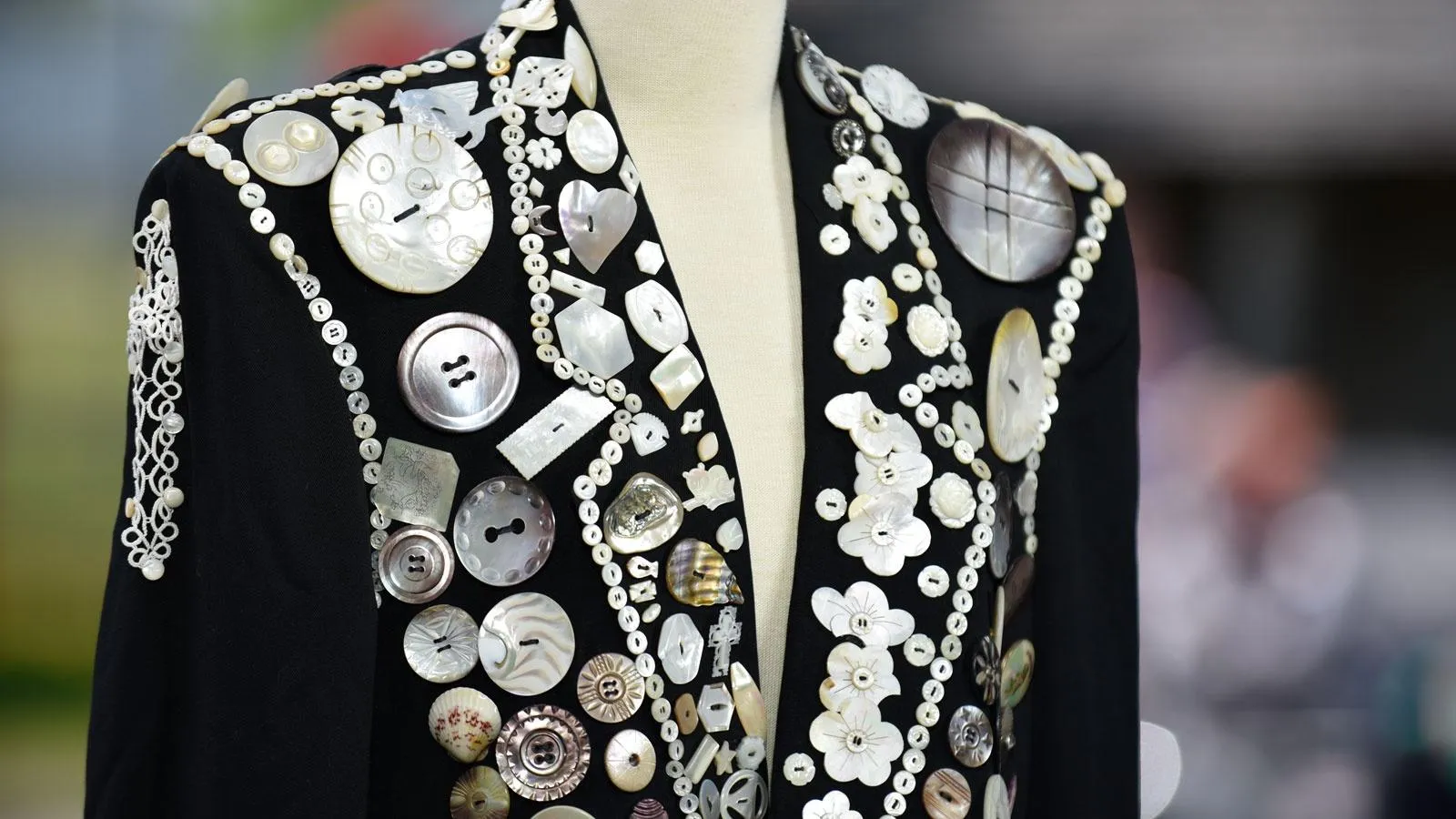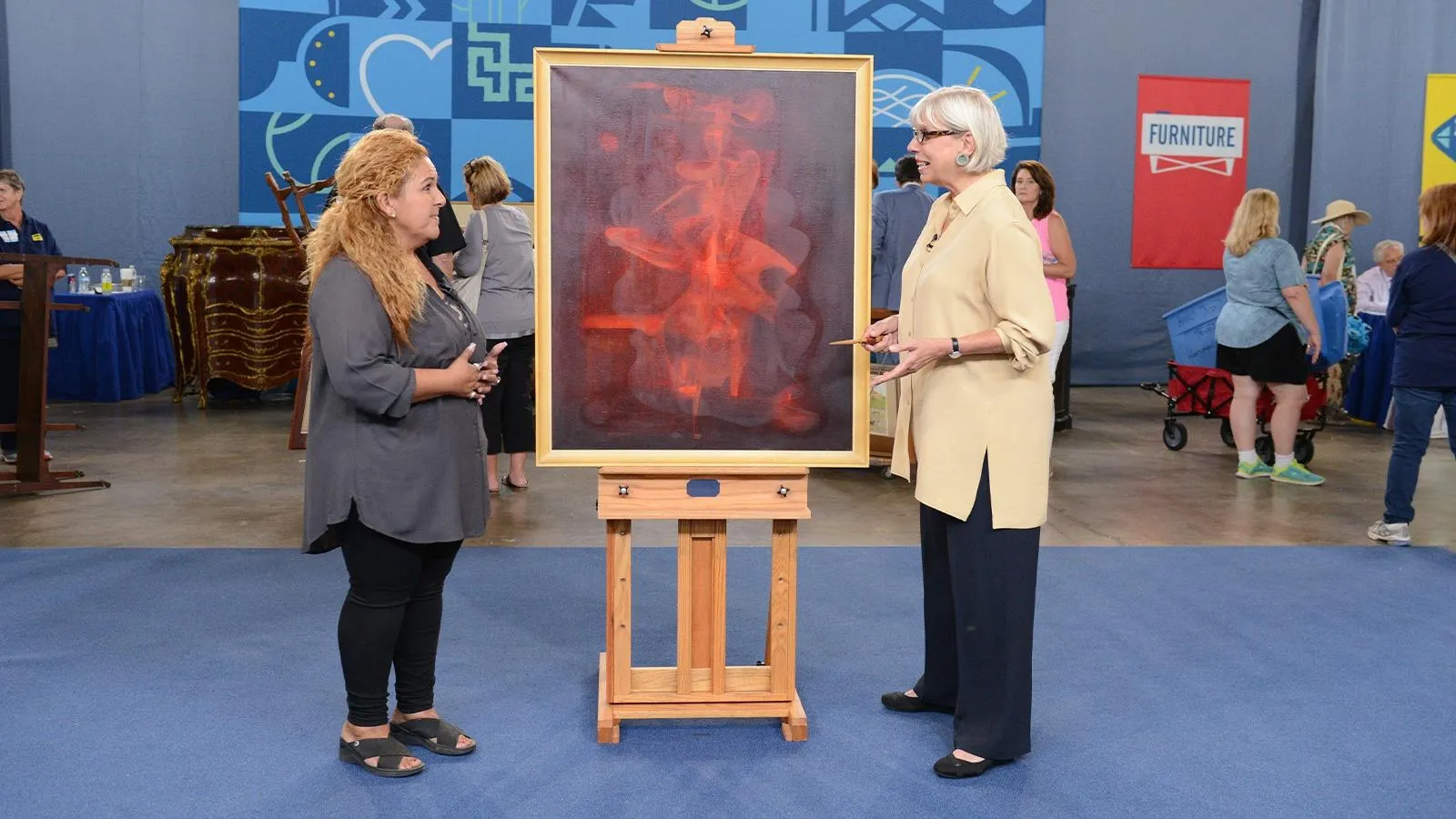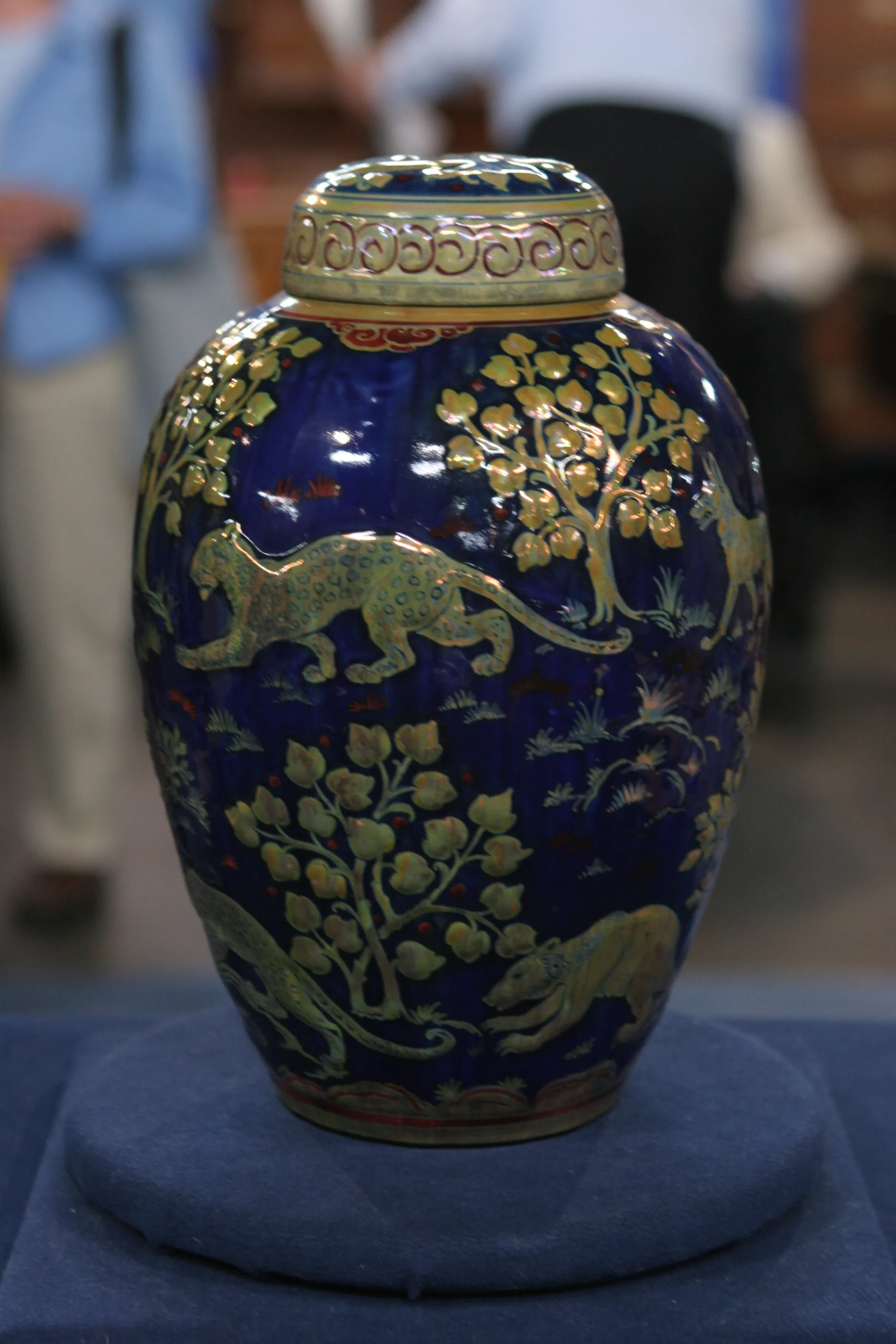GUEST: I bought this about a year ago at a thrift store in Wisconsin. It was hiding in the back, it caught my eye with the, the shape of it, and it has "Mexico" written on it. Both of my parents are from Mexico, and I just bought it.
APPRAISER: So what you, described it to me earlier as a magnifying glass.
GUEST: That's what I call it.
APPRAISER: It's not a magnifying glass at all. It's a Mexican artist named Feliciano Béjar. Feliciano was born in Michoacán region in a poor family. He assisted his father as a young man. He was a street peddler. So handling small notions and bottles and trinkets and things like that. And that sort of got his creative juices flowing a little bit. He later apprenticed with a carpenter and would start using scrap pieces and found objects and put them together and started making different things. As an artist, he had a very long and sort of meandering career. He got into painting for long time as a young man, and he actually traveled to New York for his first exhibition in 1948, and it's really not until the 1960s that he stumbled upon this style of art, which is really sculpture. And he perfected this form—the first piece actually came out in 1966. These objects were made mainly with found pieces. So pieces of machinery and gears that he would fit with these polished lenses of glass with these concave areas in them.
GUEST: Mm-hmm.
APPRAISER: They became known as magiscopes, and the magiscope became his trademark piece for the rest of his career. The purpose of the piece is not to make reality more clear. It's to distort reality, to see things in a different way. You can see his name here inscribed in the glass, followed by the date 1978. On the base here, we see the inscription, "To," someone's initials, "Mexico," and then the date. In this case, it may have been a gift from him to someone which he had inscribed. In terms of how his pieces present, this one is much more finished, much more polished. The other ones have a more raw and kind of industrial feel, but they always have this finished, very refined lens piece. This is a small piece, this would be for a desk or a tabletop.
GUEST: Mm-hmm.
APPRAISER: He made pieces that are human-scale in terms of size. He really hasn't gotten his due as an artist. Although this is sculpture and fine art, and collected as such, he's still considered more of a craftsman than an artist. How much did you pay for it?
GUEST: I want to say six dollars, no more than ten.
APPRAISER: Any idea at all what a piece like this might be worth?
GUEST: No, I think I was guessing maybe $100?
APPRAISER: He must have made this in a series. I wasn't able to find information about how many in the series.
GUEST: Oh, okay.
APPRAISER: But an identical piece is being offered in a retail setting right now for $3,000. So it's a pretty, pretty great purchase.
GUEST: (laughs) Yes.
APPRAISER: From, from the thrift store.
GUEST: Yes.
APPRAISER: Yeah. I think, as time goes on, his pieces are going to increase in value.












